UPDATED REVIEW – Nov 1, 2023 – Kawai DG30 Digital Grand Piano – The new Kawai DG30 “mini” digital grand piano is the very 1st mini digital Grand Piano from the famous Kawai piano company in their company’s history. They have had much larger digital grand pianos in the past that cost significantly more money, but this is the first one that is in a compact size and in a lower price range than before. The DG30 at $6099 discount store price is just 34″ deep which makes it one of the smallest mini grand piano out of all the major brands of digital pianos who make a digital grand piano.
KAWAI COMPANY HISTORY
Long ago and far away the Kawai Piano company was founded in Hamamatsu, Japan in 1927 which makes them nearly 100 years old. Kawai has been producing high quality acoustic grand pianos, upright pianos, and digital pianos of all types and they are exclusively a musical instrument-piano manufacturer unlike other

digital piano companies such as Yamaha and Casio who produce consumer products including motorcycles, cameras, calculators, etc. The Kawai piano company has their products in over 80 countries and even produce specialty lines of acoustic pianos for the famous Steinway Piano Company.
DG30 PIANO KEY ACTION
Typically when piano companies come out with a new model like this one and it is in a small baby grand cabinet, the functions are features usually are not new and come from technology they are already using in their other models, and this is the case for the new DG30. The DG30 is using the most popular and best plastic key action that Kawai produces called the RH3 ivory-feel key action with counter-weight technology and let-off/escapement. The RH3 action moves quickly and does not require a heavy touch so that your hands and fingers will not get fatigued when playing for long periods of time.
DG30 PIANO SOUND
The next most important thing in any digital piano is the actual piano sound itself. The sound in the DG30 is derived from sampling technology which means recording a real acoustic grand piano and putting it in the sound-chip. This technology has been around a long time and it requires special microphones placed near and inside a real acoustic grand piano to capture the piano sound at different playing levels, velocities, and resonances and that final recorded “sample” is looped and placed in the piano sound chip within the main circuit board and what you hear then comes through the speakers of the digital piano and also through stereo headphones.
DG30 PEDALS
The pedal lyre pedaling system on the DG30 looks like it does on a small acoustic baby grand and is more than adequate in performance and does replicate the feeling you would get on a good acoustic piano when pressing the pedals. Kawai uses a proprietary pedal system called Grand-feel pedal system which tries to replicate a grand piano pedal playing experience where the pedal offers more resistance as you press down the damper pedal so you get the physical feeling of pressing down real pedals along with the pedaling sound experience too. The pedals include the damper-sustain pedal, sostenuto pedal (rarely used these days), and the left soft pedal to lower volume on individual notes when necessary. The damper-sustain pedal does have the “half-damper” effect which offers progressive amounts of sustain depending on how far down you press that pedal and the sustain point is also adjustable. so it is definitely a nice system.
INSTRUMENT SOUND LIBRARY
When it comes to the available sound library on these digital piano, some brands have a lot of added instrument sounds along with the acoustic piano sounds, and the the Kawai DG30 is no exception. There is a whopping 355 total instrument sounds which you select with sound category buttons below a display screen which include a big variety of acoustic grand pianos, acoustic upright pianos, electric pianos, strings, choirs, pop, rock & jazz organs, church & pipe organs, harpsichords, mallets, bells, accordions, guitars & banjos, flutes, brass (trumpets, trombones, etc), woodwinds, reeds (saxes, oboes, clarinets, etc), synths, special effects, individual percussion, and more. Kawai has even provided 100 realistic sounding drum rhythm patterns including Rock, Jazz, Latin, Blues, Big Band, Swing, Country, etc so that you can play along with a
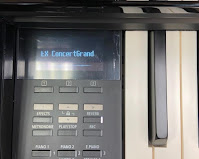
“real” drummer which also helps with rhythm and timing in more of a fun way. I have done this kind of thing many times and I recommend it for my students. I also find that having these extra instrument sounds enhances the playing experience and musical enjoyment that a person can get out of these types of pianos.
GENERAL MIDI
Beyond all these instrument sounds is the fact that this DG30 is General MIDI compatible. General MIDI is the industry recognized format by which 16-track MIDI song files can be played back. There are thousands of General MIDI song files available to purchase on the internet and some are even free of charge although those free song files may not have very good arrangements. General MIDI songs can be downloaded onto a USB flashdrive, plugged into the DG30, and then those songs will play “live” through the piano just like a player piano using the live
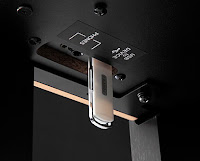
instrument sounds built into the piano, only the keys don’t physically more.
RECORDING & PLAYBACK
Beyond the General MIDI song playback system is the ability of the DG30 to record your music on 16 separate tracks recording up to 16 separate instruments one at a time and then playing them all back simultaneously so that you can hear your completed, finished “masterpiece” and arrangement! In other words, you can create your own song one instrument at a time recording each instrument on top of the other until you use up all 16 tracks using any 16 instruments from the instrument library on the piano. So let’s say you want to arrange and record an orchestral recording of the “Star Wars theme…well you can do that on this instrument and record the strings, brass, woodwinds, reeds, percussion, and all other instruments and save that recording and store it on a USB flash drive. You can also save a MIDI recording as an audio file to be played on an external device.
EXTRA FEATURES
It’s been my experience as a long time piano teacher, musician, and advisor that most people who get these digital mini grand pianos do it primarily to focus on piano playing. Yes, there are a lot of “bells & whistles” that some of these pianos have as I have already mentioned, but if the piano playing experience is not real, then the all those bells & whistles are meaningless in my opinion. So given the fact that this new DG30 does have what it takes to be a

good very “piano,” then what does it offer with regard to even more of those extra “bells & whistles which can be useful depending on what you want to do with your music?
VIRTUAL TECHNICIAN
I’ve already talked about the huge instrument sound library this piano has along with the capability of playing General MIDI song files. But there are some really cool proprietary features this piano has that I like a lot which include being able to edit and customize the acoustic piano sounds in a myriad of ways (Kawai calls this feature “Virtual Technician”) such changing the touch curve, individual note voicing and changing the tonal characteristics of the piano sounds, more or less damper resonance & damper noise, string resonance, pedal sustain-decay time, individual note volume, stretch tuning range and other organic elements of the piano sound. Once you make these adjustments you can save your settings into memory to instantly recall it later. So you have a choice of playing the Kawai factory piano presets which are very good or customizing those sounds to your individual musical tastes. Kawai also has a proprietary app for iPad where you can connect your iPad to the DG30 and access all these very cool Virtual Technician features from your color touch screen. This is a much more intuitive way of using these features and will also give you quicker and more control over your piano sounds.
CONCERT MAGIC
Other proprietary features include the Concert Magic system which allows the very beginning player, even as young as 2 years old, to get a real sense of what playing and interacting with music is really like and hearing and seeing themselves “play” the piano. The Concert Magic feature has been used in other Kawai digital piano models over the years and it’s definitely one of the most fun features I have ever seen in a digital piano and it is actually useful for music educational purposes in learning rhythm & timing, getting a sense of what accompaniment does and how it sounds, and also learning finger position and hand movement. The Concert Magic feature makes a person sound waaaaaay better than they really are (and it’s fun) so it is engaging and even a bit addicting which is not a bad thing because it makes you want to play the piano, especially if you don’t know how to play yet, and that is good for any person at any age. Concert Magic has 176 songs built into it and you can “play” and interact with these songs in different ways depending on the mode you choose to use and many of the built-in songs are quite familiar to lots of people so you should recognize them which makes it even more fun to use.
PIANO EDUCATION & LESSON FUNCTIONS
With regard to educational features and functions in the DG30 mini grand, Kawai has included large libraries of digitized audio music from popular piano curriculum. These song libraries include such notable titles as Alfred’s Basic Piano Library Lesson Books, Alfred’s Basic Adult Piano Course, Alfred’s Premier Piano course from their lesson books, Burmuller Etudes, Czerny Etudes, Chopin lesson book songs, and more. All you have to do is purchase the appropriate lesson/songbooks (which are easy to order

on-line) and then you’ll be able to use all the songs for those books that are built-in to the DG30 and be able to listen and play along with those lesson books and also be able to isolate the left and right hand of those songs independently so you can learn the left hand and right hand separately while being able to listen to and play along with those parts.
BLUETOOTH WIRELESS
Having Bluetooth wireless connectivity seems to be a big deal these days and having it as part of a digital piano is no exception. The DG30 has both audio wireless streaming capability and MIDI wireless connectivity so that you will not need direct cables for connection to external devices such as mobile phones, tablets, or computers. Bluetooth audio wireless allows you to connect your tablet or phone to the piano wirelessley and hear your favorite music be streamed live through the speaker system of the DG30 piano. In this way you can play piano live along with your favorite song coming out of the piano speaker system and sound like you are a live part of that band or orchestra. Essentially you are using the piano speaker system to hear songs from your external digital music library. The Bluetooth wireless MIDI function allows you to connect wirelessley to your iPad or Android device (or computer) so that you can interface with music educational apps and other related apps to better learn how to play piano or to use certain apps to enhance your piano playing enjoyment.
STEREO HEADPHONE FEATURES
One of the big advantages of digital pianos is being able to practice in privacy by wearing stereo headphones for silent practice. This means you will be able to have a grand piano sound experience in your ears when playing the keys but no one else will hear you. This is one of the big reasons for owning a digital pianos because then you can play anytime you like even if other people in the home are sleeping, resting, watching TV, etc…you won’t disturb them. For people practicing the same song over and over then hearing that repetitive song can get a little “old” after awhile for some people so wearing headphones takes care of that. Or perhaps you are a bit embarrassed when you are practicing your music and don’t want others in the home to hear you…then practicing privately with headphones is a great solution to that problem and it encourages longer practice sessions as well. When it comes to using headphones for kids, make sure you get something that is not supper high quality or expensive because young kids tend to wear out or “break” headphones after a while.
INTERNAL SPEAKER SYSTEM
Speaking of the piano playing experience and the sound you hear, the internal speaker system of any digital piano is an important aspect of the piano sound you hear. When the internal speaker system is done properly, is powerful, and has high quality components, your listening experience will be that much better. The DG30 has two 4″ speakers and two 5″ speakers going through 2 amplifiers producing a total of 40 watts of power. Two of those speakers are projected out the bottom of the piano and the other two going up through the inside top of the piano in the soundboard area. The speaker system was designed and produced by the Onkyo audio company which is a well known Japanese audio company. Most digital piano companies tend to design their own speaker systems but in the case of Kawai they decided to have an actual pro audio company do the DG30 speaker system and audio circuit boards for them and the result is fairly impressive. The Onkyo sound is a good one overall but there are a few shortcomings.
When it comes to digital piano internal speaker systems, the quality of the audio components is just as important as quantity in the specifications. Nevertheless, I would have preferred to see a sub-woofer of some type in this model along with additional audio power and extra amplifiers, especially given its discount selling price of 6099. Typically in this price range the audio power of the internal speaker system can go anywhere from a low of about 40 watts and upwards to 150 watts and more with either larger speakers and/or more amplifiers and more speakers.
USER INTERFACE CONTROL PANEL
To keep the look of this mini baby grand cabinet as minimalistic as possible, Kawai is using a new digital OLED interface with control buttons so that you can navigate the features and functions in a more intuitive way. Other brands of digital pianos have LCD screens with buttons and some of them have color touch screens rather than using buttons at all. Kawai has color touch screens on some of their vertical upright digital piano as does Yamaha, including a couple of Yamaha digital mini grand pianos. However, OLED screens are a newer technology that makes the display screen much clearer, brighter, and easier to read so having that technology is a very nice improvement for the user. I like using the OLED display control panel and accessing the various features doesn’t take long to learn. The display screen also does not have to be on all the time so it can go dark just like your personal phone & tablet devices which makes the piano look even more like a piano and less “digital.”
AUDIO & MIDI CONNECTIVITY
As far as internal and external connectivity Kawai has done a good job with that part of the piano because not only does it have the Bluetooth wireless audio and MIDI connectivity, but the DG30 also has 2 stereo headphone jacks consisting of one full size 1/4″ and one 1/8″ mini jack which allows for a variety of headphones to be plugged in. This piano does not have wireless Bluetooth headphone connectivity nor does any other brand or model of digital piano because of inherent latency-delay problems with that technology when using headphones and playing in real time. Other connectivity jacks include standard MIDI in & out, two 1/4″ output jacks, two 1/4″ input jacks. I would
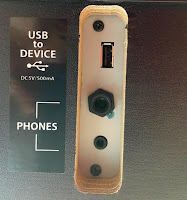
have preferred to see the addition of a stereo 1/8″ input jacks so that you could easily connect a personal device from their 1/8″ mini output jacks which many of them have, so in this day & age of digital technology that omission was not thought out very well.
PIANO CABINET AND DESIGN
The cabinet design and polished ebony finish of this new Kawai DG30 is actually quite attractive for its small size. The measurements of the cabinet is 58″ wide x 35″ high (not including music rack) x 34″ deep and it weighs in at 174 lbs. Due to its small size and relatively light weight it is fairly easy to assemble with at least 2 people doing that job. The small size of the cabinet usually means there may be something lacking in trying to replicate the look of a real grand piano because many of these smaller size mini digital pianos either do not all 3 legs, don’t have an actual wood interior, or don’t have both lid opening positions short, and fully open to a taller height.

short height and full height lid opening position, all three support legs, and a wooden interior. The piano also has a regular music rack with a 3 position angle adjustability along with a sliding key cover.

DG30 does a very good job of that, especially considering the smaller cabinet size.
FINAL THOUGHTS
In the final analysis the bottom line is this: I believe the new Kawai DG30 is a worthy competitor to the other big piano brands with digital grand pianos and with this model being one of the smallest along with being especially attractive, it will look great in any home and with almost any décor. It’s good to be aware that as of now this new model only comes in polished ebony and no other color or finish. The features and functions in the DG30 are plentiful and you will likely never run out of fun and exciting musical things that you can do on this piano. But most of all it is an impressive mini baby grand for focusing on the “piano playing experience” with a responsive quick moving piano key action, realistic dynamic piano sound, and enjoyable pedaling that will do the things you need it to do.
If you want more info on new digital pianos and LOWER PRICES than internet discounts, please email me at tim@azpianowholesale.com or call direct at 602-571-1864.




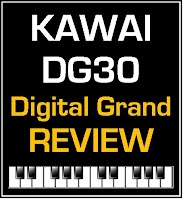



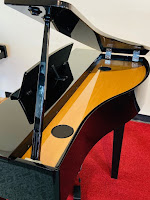
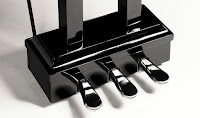
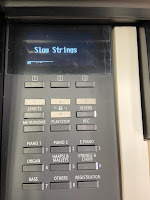

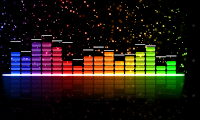

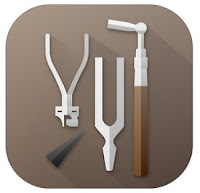


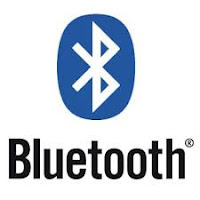

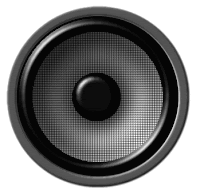




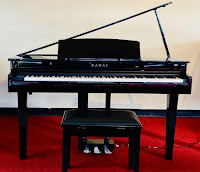










still not sure why anyone would get this over the CA79/99 which has a better wooden action and still for a lesser price…or am i missing something?
I have been looking at both those models.Im not 100% sure that the CA99 records in midi as standalone. The DG30 which is a plus. The DG30 has more sounds which is great for arranging and of course the furniture aspect which looks more grandiose than an upright. Little children can be prone to swing their legs into the board but the grand has free space by design. I agree on paper the CA99 appears better but there are some good reasons to opt for the GC30.I am undecided at present but the points mentioned above may swing it for me especially if I add some speakers to compensate for what appears its major weakness.
Great review. Thanks for that.
Does the Kawai DG30 includes accompaniments? If so, how May? Thanks.
The DG30 does not have auto accompaniments/backing tracks. The only digital mini grand piano worth considering that does have auto accompaniments is the Samick SG120 and I have done a review of that model. Those accompaniments are actually very impressive if that's the kind of thing you're looking for.
Tim,
I bought a Korg G1Air from you when they came out a few years back for my son when he started out playing piano. He likes the Korg but has started to notice a couple of minor quirks/deficiencies in it. Don't get me wrong, it sounds really good. But, for example, when holding the 'G' there is no reverb but when holding the 'A' there is a slightly longer note. Stuff like that is causing him to want to upgrade.
So I'm now thinking of upgrading from the Korg to a mini/baby digital grand. I checked out your best digital mini-grand reviews and we've narrowed it down to two – the Kawai DG30 and the Samick SG500. I've read your reviews of both but a direct side to side comparison is hard to find. So we're undecided between the two.
Size between the two is not a major issue for us. Whereas, key action is paramount – the closer to acoustic feel and touch the better. I also want something that will help teach him – through built-in programs, ability to upload, etc.
Any thoughts between the two?
Thank you.
interesting. send me an email and I would be happy to talk with you about your piano questions. thank you.
I am looking for a Kawaii DG30 in Canada . Can anyone direct as to a good Kawaii dealer . Does your company ship to Canada ? I am new at this whole process of buying digital pianos Thanks.
There has been a severe shortage and lack of supply of the Kawai DG30 digital mini grand piano throughout North America. This problem is true for other popular brands and models of digital pianos and will likely not improve anytime soon. You will need to contact local Kawai piano dealers to see if they have that model in stock.
Awesome review. Thanks so much for taking the time and making the purchase process so much easier!!
Hi, thank you very much for your extensive and excellent review. I would like to know your opinion on how this piano compares to the similarly priced and sized Roland GP-3 and the Yamaha CLP 775 and 785.
With best regards
Gerard Koen